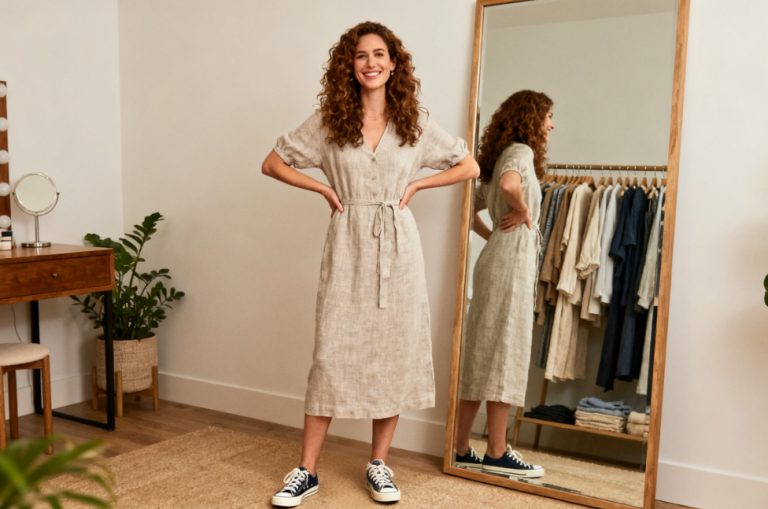
Renting clothes has been heralded as a revolutionary solution to fashion’s environmental crisis. Platforms like Rent the Runway, HURR, and Nuuly are rising in popularity, promising you a designer wardrobe without the waste. But here’s the real question: is renting actually as eco-friendly as it seems, or is it another cleverly packaged form of greenwashing?
In this article, we peel back the layers of the fashion rental trend to examine its environmental benefits, hidden costs, and whether it deserves its green halo.
The Appeal of Clothing Rentals
From weddings and galas to workwear and everyday fashion, renting clothes offers a modern-day closet refresh without the commitment of ownership. Consumers are drawn to:
- Access to luxury items without high costs
- Reduced clothing clutter at home
- Style experimentation without regret
- A sense of sustainability, as renting is perceived as reusing
In theory, it sounds like a win for your wallet and the planet. But let’s look at the fine print.
The Environmental Case For Renting
At first glance, renting seems sustainable because it promotes shared use over single-use consumption. The core environmental arguments are:
- Lower garment production: One rented item can serve many users, theoretically decreasing overall demand.
- Extended clothing lifespan: Pieces are often worn more times than the average fast fashion purchase.
- Reduced fashion waste: Fewer discarded items means less textile pollution.
In 2019, a study by environmental consultancy Green Strategy stated that extending the life of clothes by just 9 months can reduce their carbon, water, and waste footprints by 20-30%.
So far, so good. But what’s the catch?
The Hidden Costs of Fashion Rentals
While the reuse model is solid in theory, real-world logistics muddy the waters. Clothing rental involves multiple layers of impact:
1. Transportation Emissions
Rental services rely heavily on shipping—often express or two-day delivery. Every item sent to and from customers racks up emissions from trucks, planes, and vans. For services operating at scale, this is no small carbon footprint.
2. Frequent Dry Cleaning
Garments must be professionally cleaned between users, and traditional dry cleaning often uses toxic chemicals like perchloroethylene (“perc”). Even eco-cleaning methods consume substantial water and energy.
3. Packaging Waste
Rentals come with layers of plastic, cardboard, hangers, and tags. While some platforms use reusable packaging, a surprising amount still ends up in landfills.
4. Short Product Lifespan Due to Damage
Many rented garments experience heavy wear, and some are retired quickly due to damage, loss, or style turnover. This shortens the lifespan and challenges the sustainable reuse model.
Is Renting Better Than Buying?
It depends. Renting can be more sustainable than fast fashion if it displaces the need to buy cheap, poorly made clothes. But if rentals are used in addition to regular shopping—not instead of it—the benefit vanishes.
Research by the Finnish Environment Institute suggests that if transportation and cleaning are not managed sustainably, renting may end up being worse for the environment than simply buying a few high-quality pieces and wearing them longer.
When Renting Makes Sense
Renting can be a smart eco-choice under certain circumstances:
- Special occasions: Weddings, interviews, black-tie events
- One-time needs: Maternity clothes, vacation-specific attire
- Style trials: Testing a trend before investing
In these cases, renting avoids the waste of single-use purchases and prevents long-term wardrobe clutter.
Tips for Renting Sustainably
If you’re looking to make clothing rentals part of your sustainable lifestyle, here are some tips:
- Batch rentals to minimize shipping frequency
- Choose local platforms to reduce transportation emissions
- Favor brands using green cleaning methods
- Avoid renting items you could borrow or already own
- Treat rented items with care to extend their life cycle

Alternatives That Might Be Greener
Renting isn’t the only solution to fashion’s footprint. Consider these other eco-friendly options:
- Thrift and secondhand shopping
- Clothing swaps with friends
- Building a capsule wardrobe
- Upcycling or tailoring existing items
These practices often involve less logistics and lower emissions than renting.
The Verdict: Green or Greenwashed?
Clothing rental is neither a fashion villain nor a flawless hero. It’s a tool, and like any tool, its impact depends on how it’s used. When approached mindfully and sparingly, renting can reduce waste and curb impulse shopping. But if embraced as a license to consume more often, it may do more harm than good.
So, is renting clothes eco-friendly? It can be—but only if you treat it as a conscious choice, not a trendy loophole.
Fashion sustainability is not about finding a perfect solution. It’s about making better decisions. And sometimes, the most sustainable outfit is the one already hanging in your closet.


